Dec. 17th Event: The Latest on Omicron, Boosters, and Immunity
Kira Peikoff was the editor-in-chief of Leaps.org from 2017 to 2021. As a journalist, her work has appeared in The New York Times, Newsweek, Nautilus, Popular Mechanics, The New York Academy of Sciences, and other outlets. She is also the author of four suspense novels that explore controversial issues arising from scientific innovation: Living Proof, No Time to Die, Die Again Tomorrow, and Mother Knows Best. Peikoff holds a B.A. in Journalism from New York University and an M.S. in Bioethics from Columbia University. She lives in New Jersey with her husband and two young sons. Follow her on Twitter @KiraPeikoff.

The Omicron variant poses new uncertainty for the vaccines, which four leading experts will address during our virtual event on December 17th, 2021.
This virtual event will convene leading scientific and medical experts to discuss the most pressing questions around the new Omicron variant, including what we know so far about its ability to evade COVID-19 vaccines, the role of boosters in eliciting heightened immunity, and the science behind variants and vaccines. A public Q&A will follow the expert discussion.
EVENT INFORMATION:
Date: Friday Dec 17, 2021
2:00pm - 3:30pm EST
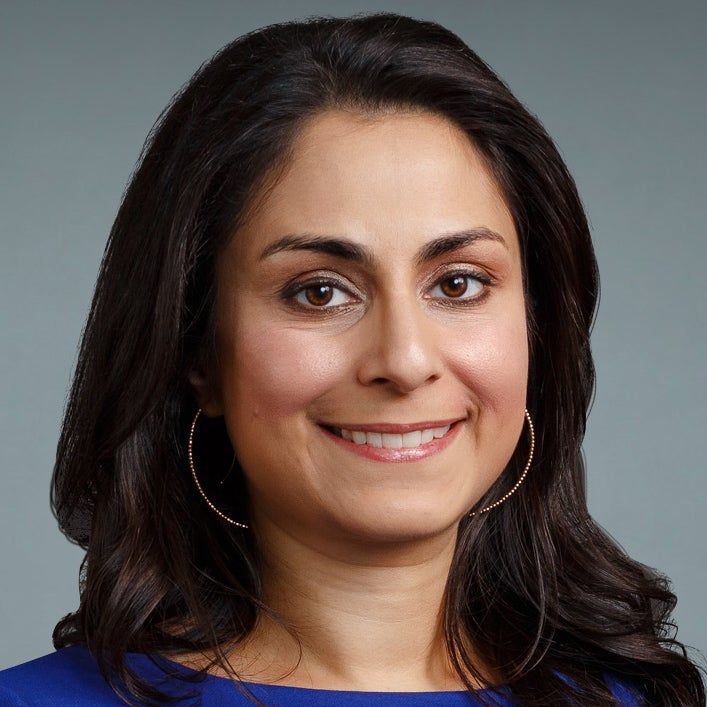
Dr. Céline Gounder, MD, ScM, is the CEO/President/Founder of Just Human Productions, a non-profit multimedia organization. She is also the host and producer of American Diagnosis, a podcast on health and social justice, and Epidemic, a podcast about infectious disease epidemics and pandemics. She served on the Biden-Harris Transition COVID-19 Advisory Board.
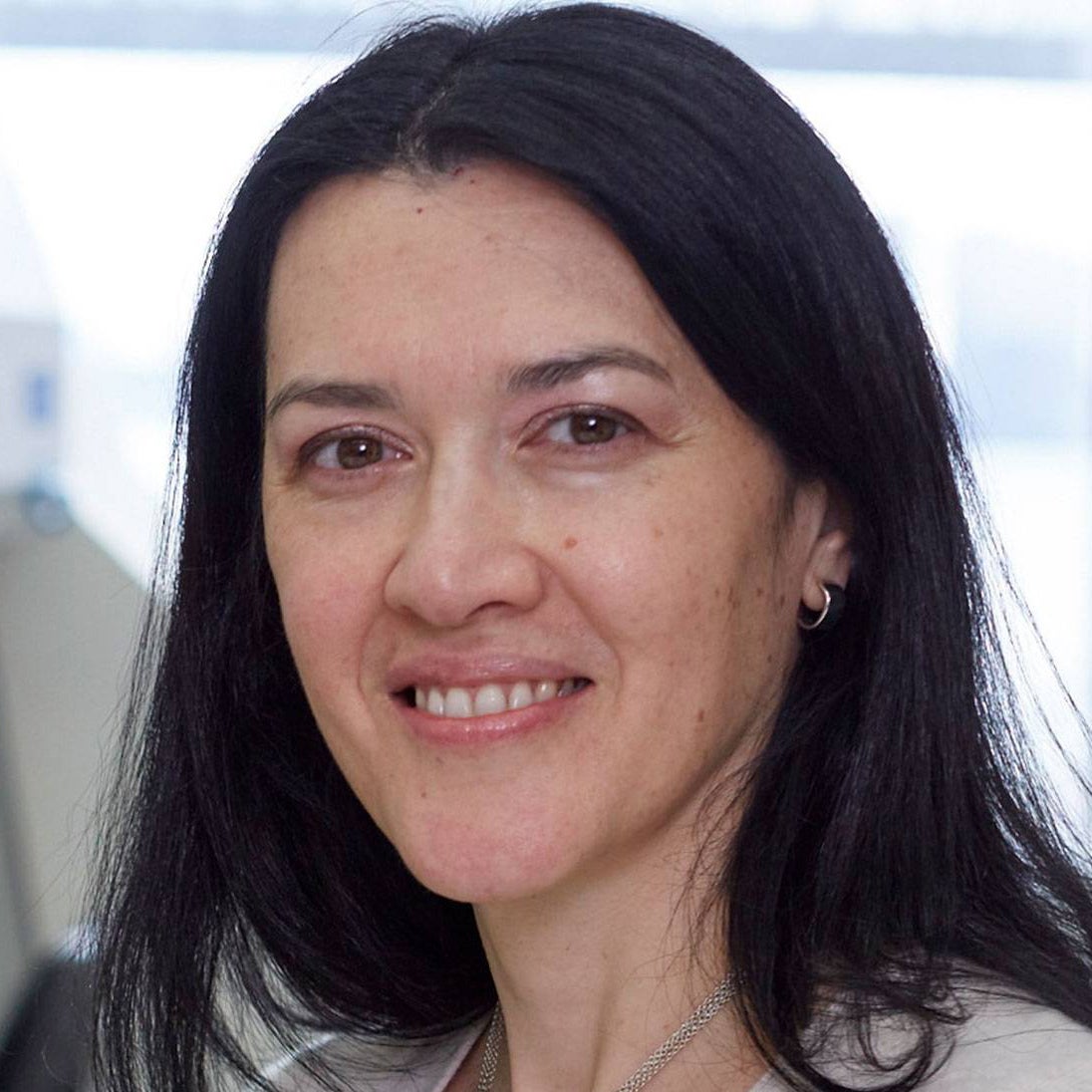 Dr. Theodora Hatziioannou, Ph.D., is a Research Associate Professor in the Laboratory of Retrovirology at The Rockefeller University. Her research includes identifying plasma samples from recovered COVID-19 patients that contain antibodies capable of neutralizing the SARS-CoV-2 coronavirus.
Dr. Theodora Hatziioannou, Ph.D., is a Research Associate Professor in the Laboratory of Retrovirology at The Rockefeller University. Her research includes identifying plasma samples from recovered COVID-19 patients that contain antibodies capable of neutralizing the SARS-CoV-2 coronavirus.
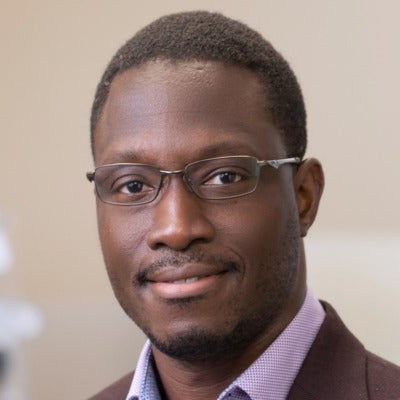
Dr. Onyema Ogbuagu, MBBCh, is an Associate Professor at Yale School of Medicine and an infectious disease specialist who treats COVID-19 patients and leads Yale’s clinical studies around COVID-19. He ran Yale’s trial of the Pfizer/BioNTech vaccine.
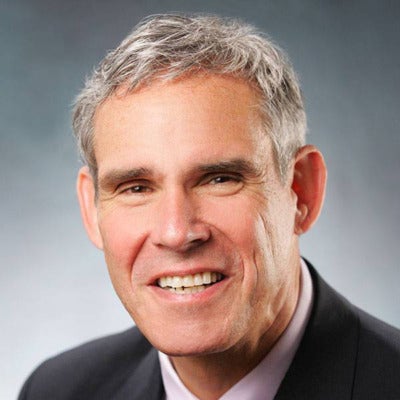
Dr. Eric Topol, M.D., is a cardiologist, scientist, professor of molecular medicine, and the director and founder of Scripps Research Translational Institute. He has led clinical trials in over 40 countries with over 200,000 patients and pioneered the development of many routinely used medications.
This event is the fourth of a four-part series co-hosted by Leaps.org, the Aspen Institute Science & Society Program, and the Sabin–Aspen Vaccine Science & Policy Group, with generous support from the Gordon and Betty Moore Foundation and the Howard Hughes Medical Institute.
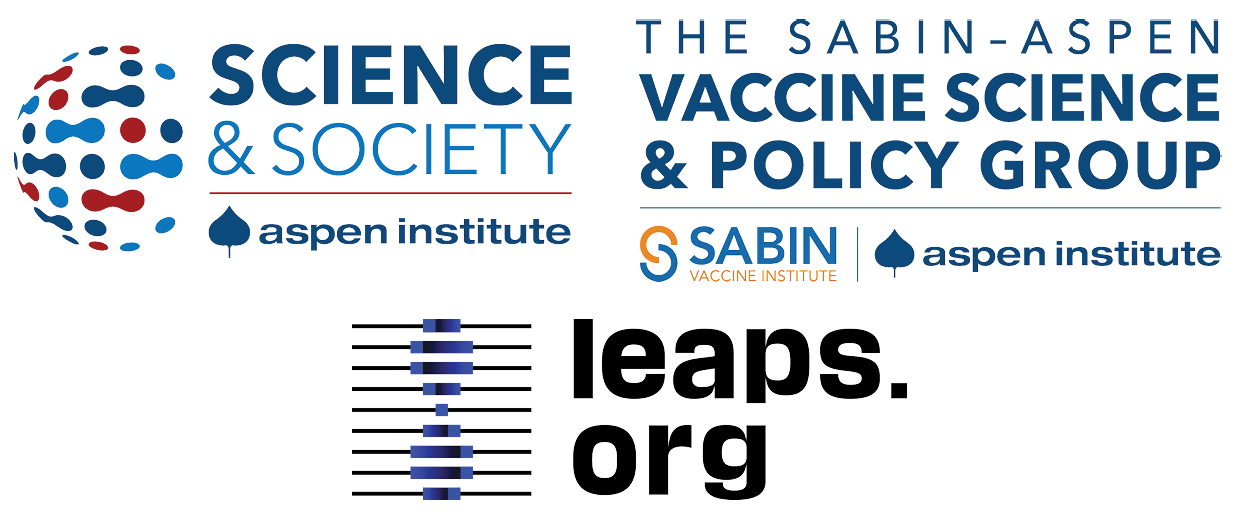
Kira Peikoff was the editor-in-chief of Leaps.org from 2017 to 2021. As a journalist, her work has appeared in The New York Times, Newsweek, Nautilus, Popular Mechanics, The New York Academy of Sciences, and other outlets. She is also the author of four suspense novels that explore controversial issues arising from scientific innovation: Living Proof, No Time to Die, Die Again Tomorrow, and Mother Knows Best. Peikoff holds a B.A. in Journalism from New York University and an M.S. in Bioethics from Columbia University. She lives in New Jersey with her husband and two young sons. Follow her on Twitter @KiraPeikoff.
Deaf Scientists Just Created Over 1000 New Signs to Dramatically Improve Ability to Communicate
Sarah Latchney, the first deaf PhD student at the University of Rochester School of Medicine & Dentistry, pictured here at work at a lab in the department of environmental sciences.
For the deaf, talent and hard work may not be enough to succeed in the sciences. According to the National Science Foundation, deaf Americans are vastly underrepresented in the STEM fields, a discrepancy that has profound economic implications.
The problem with STEM careers for the deaf and hard-of-hearing is that there are not enough ASL signs available.
Deaf and hard-of-hearing professionals in the sciences earn 31 percent more than those employed in other careers, according to a 2010 study by the National Technical Institute for the Deaf (NTID) in Rochester, N.Y., the largest technical college for deaf and hard-of-hearing students. But at the same time, in 2017, U.S. students with hearing disabilities earned only 1.1 percent of the 39,435 doctoral degrees awarded in science and engineering.
One reason so few deaf students gravitate to science careers and may struggle to complete doctoral programs is the communication chasm between deaf and hard-of-hearing scientists and their hearing colleagues.
Lorne Farovitch is a doctoral candidate in biomedical science at the University of Rochester of New York. Born deaf and raised by two deaf parents, he communicated solely in American Sign Language (ASL) until reaching graduate school. There, he became frustrated at the large chunk of his workdays spent communicating with hearing lab mates and professors, time he would have preferred spending on his scientific work.
The problem with STEM careers for the deaf and hard-of-hearing is that there are not enough ASL signs available, says Farovitch. Names, words, or phrases that don't exist in ASL must be finger spelled — the signer must form a distinct hand shape to correspond with each letter of the English alphabet, a tedious and time-consuming process. For instance, it requires 12 hand motions to spell out the word M-I-T-O-C-H-O-N-D-R-I-A. Imagine repeating those motions countless times a day.
To bust through this linguistic quagmire, Farovitch, along with a team of deaf STEM professionals, linguists, and interpreters, have been cooking up signs for terms like Anaplasma phagocytophilum, the tick-borne bacterium Farovitch studies. The sign creators are then videotaped performing the new signs. Those videos are posted on two crowd-sourcing sites, ASLcore.org and ASL Clear.
The beauty of ASL is you can express an entire concept in a single sign, rather than by the name of a word.
"If others don't pick it up and use it, a sign goes extinct," says Farovitch. Thus far, more than 1,000 STEM terms have been developed on ASL Clear and 500 vetted and approved by the deaf STEM community, according to Jeanne Reis, project director of the ASL Clear Project, based at The Learning Center for the Deaf in Framingham, Mass.
The beauty of ASL is you can express an entire concept in a single sign, rather than by the name of a word. The signs are generally intuitive and wonderfully creative. To express "DNA" Farovitch uses two fingers of each hand touching the tips of the opposite hand; then he draws both the hands away to suggest the double helix form of the hereditary material present in most organisms.
"If you can show it, you can understand the concept better,'' says the Canadian-born scientist. "I feel I can explain science better now."
The hope is that as ASL science vocabulary expands more, deaf and hard-of-hearing students will be encouraged to pursue the STEM fields. "ASL is not just a tool; it's a language. It's a vital part of our lives," Farovitch explains through his interpreter.
The deaf community is diverse—within and beyond the sciences. Sarah Latchney, PhD, an environmental toxicologist, is among the approximately 90 percent of deaf people born to hearing parents. Hers made sure she learned ASL at an early age but they also sent Latchney to a speech therapist to learn to speak and read lips. Latchney is so adept at both that she can communicate one-on-one with a hearing person without an interpreter.
Like Favoritch, Latchney has developed "conceptually accurate" ASL signs but she has no plans to post them on the crowd-sourcing sites. "I don't want to fix [my signs]; it works for me," she explains.
Young scientists like Farovitch and Latchney stress the need for interpreters who are knowledgeable about science. "When I give a presentation I'm a nervous wreck that I'll have an interpreter who may not have a science background," Latchney explains. "Many times what I've [signed] has been misinterpreted; either my interpreter didn't understand the question or didn't frame it correctly."
To enlarge the pool of science-savvy interpreters, the University of Rochester will offer a new masters degree program: ASL Interpreting in Medicine and Science (AIMS), which will train interpreters who have a strong background in the biological sciences.
Since the Americans with Disabilities Act was enacted in 1990, opportunities in higher education for deaf and hard-of-hearing students have opened up in the form of federally funded financial aid and the creation of student disability services on many college campuses. Still, only 18 percent of deaf adults have graduated from college, compared to 33 percent of the general population, according to a survey by the U.S. Census Bureau in 2015.
The University of Rochester and the Rochester Institute of Technology, home to NTID, have jointly created two programs to increase the representation of deaf and hard-of-hearing professionals in the sciences. The Rochester Bridges to the Doctorate Program, which Farovitch is enrolled in, prepares deaf scholars for biomedical PhD programs. The Rochester Postdoctoral Partnership readies deaf postdoctoral scientists to successfully attain academic research and teaching careers. Both programs are funded by the National Institutes of Science. In the last five years, the University of Rochester has gone from zero deaf postdoctoral and graduate students to nine.
"Deafness is not a problem, it's just a difference."
It makes sense for these two private universities to support strong programs for the deaf: Rochester has the highest per capita population of deaf or hard-of-hearing adults younger than 65 in the nation, according to the U.S. Census. According to the U.S. Department of Education, there are about 136,000 post-secondary level students who are deaf or hard of hearing.
"Deafness is not a problem, it's just a difference," says Farovitch. "We just need a different way to communicate. It doesn't mean we require more work."
Pregnant and Breastfeeding Women Might Have a New Reason to Ditch Artificial Sweeteners
A mom cradles her newborn baby.
Women considering pregnancy might have another reason to drop artificial sweeteners from their diet, if a new study of mice proves to apply to humans as well. It highlights "yet another potential health impact of zero-calorie sweeteners," according to lead author Stephanie Olivier-Van Stichelen.
The discovery was serendipitous, not part of the original study.
It found that commonly used artificial sweeteners consumed by female mice transfer to pups in the womb and later through milk, harming their development. The sweeteners affected the composition of bacteria in the gut of the pups, making them more vulnerable to developing diabetes, and greatly reduced the liver's capacity to neutralize toxins.
The discovery was serendipitous, not part of the original study, says John Hanover, the senior author and a cell biologist at the NIH National Institute of Diabetes and Digestive and Kidney Diseases. The main study looked at how a high sugar diet in the mother turns genes on and off in the developing offspring.
It compared them with mothers fed a low sugar diet, replacing sugar with a mix of sucralose and acesulfame-K (AK), two non-nutrient artificial sugars that are already used extensively in our food products and thought to be safe.
While the artificial sweeteners had little effect on the mothers, the trace amounts that were transferred through the placenta and milk had a profound effect on the pups. Hanover believes the molecules are changing gene expression during a crucial, short period of development.
"Somewhat to our surprise, we saw in the pups a really dramatic change in the microbiome" of those whose mothers were fed the artificial sweeteners, Hanover told leapsmag. "It looked like the neonates were much, much more sensitive than their mothers to the sucralose and AK." The unexpected discovery led them to publish a separate paper.
"The protective microbe Akkermansia was largely missing, and we saw a pretty dramatic shift in the ratio of two bacteria that are normally associated with metabolic disease," a precursor to diabetes, he explains. Akkermansia is a bacteria that feeds on mucus in the gut and helps remodel the tissue to an adult state over the first several months of life in a mouse. A similar process takes several years in humans, as the infant is weaned off of breast milk as the primary food source.
The good news is the body seems to remove these artificial sweeteners fairly quickly, probably within a week.
Another problem the researchers saw in the animals was "a particularly striking change in the metabolism of the detoxification systems" in the liver, says Hanover. A healthy liver is dark red, but a high dose of the artificial sweeteners turned it white, "which is a sign of massive problems."
The study was conducted in mice and Hanover cautions the findings may not apply to humans. "But in general, the microbiome changes that one sees in the rodent model mimics what we see in humans...[and] the genes that are turned on in the mouse and the human are very similar."
Hanover acknowledges the quantity of artificial sweeteners used in the study is on the high end of human consumption, roughly the equivalent of 20 cans of diet soda a day. But the sweeteners are so ubiquitous in consumer products, from foods to lipstick, and often not even mentioned on the label, that it is difficult to measure just how much a person consumes every day.
The good news is the body seems to remove these artificial sweeteners fairly quickly, probably within a week. Until further studies provide a clearer picture, women who want to err on the side of caution can choose to reduce if not eliminate their exposure to artificial sweeteners during pregnancy and breastfeeding.

